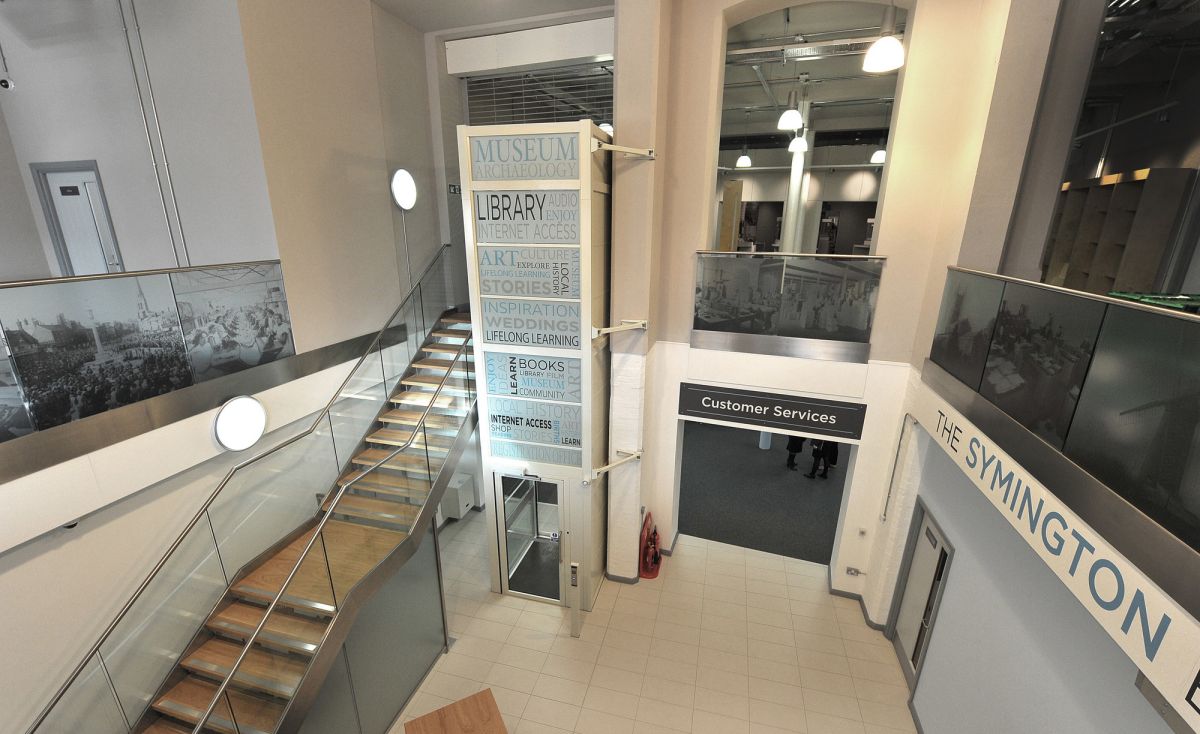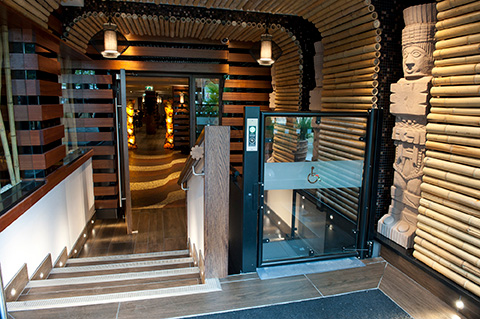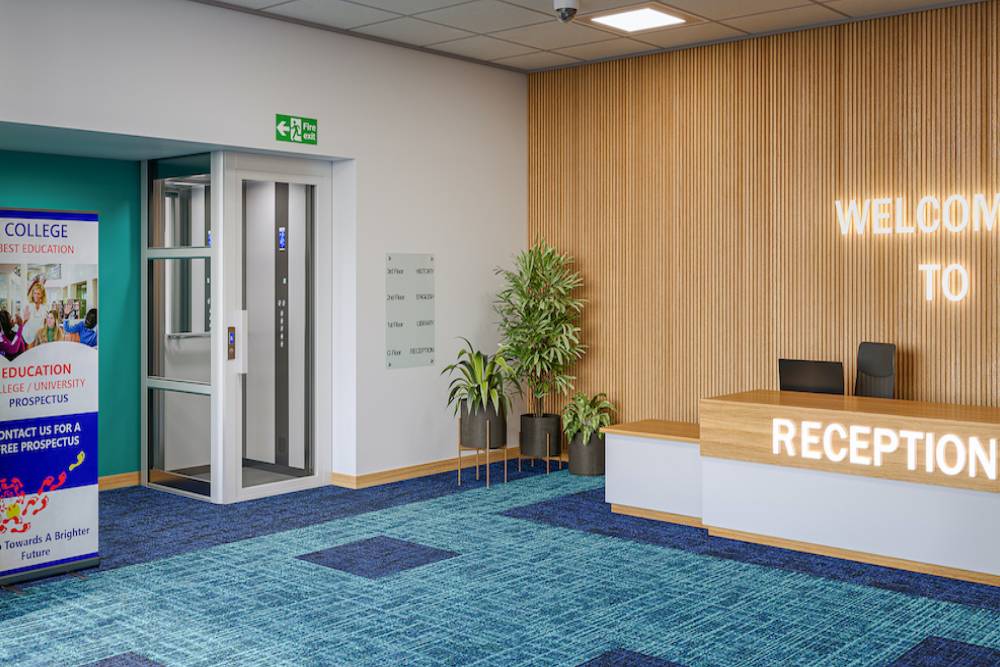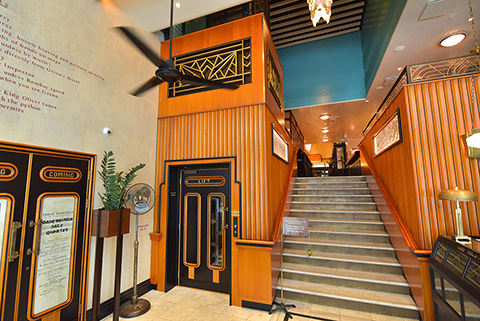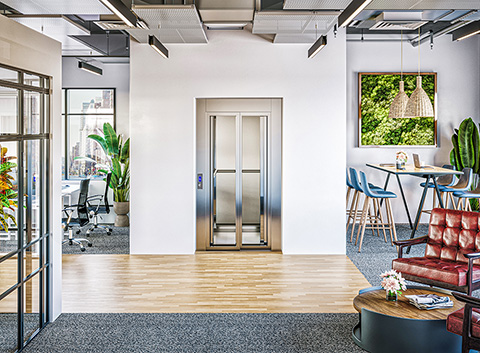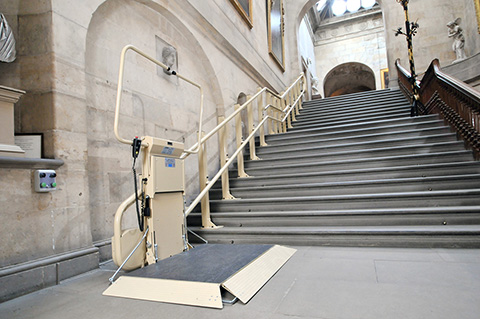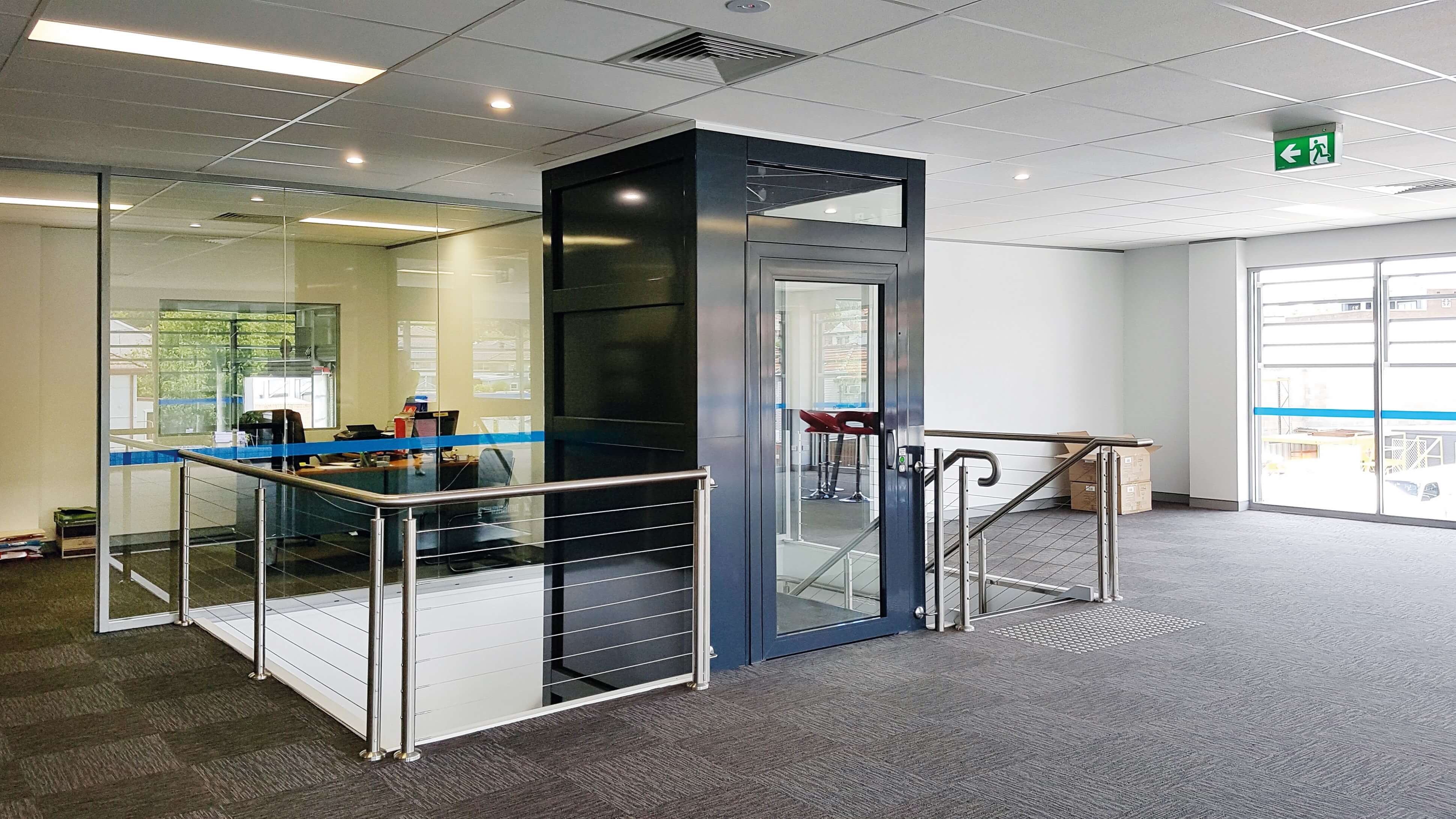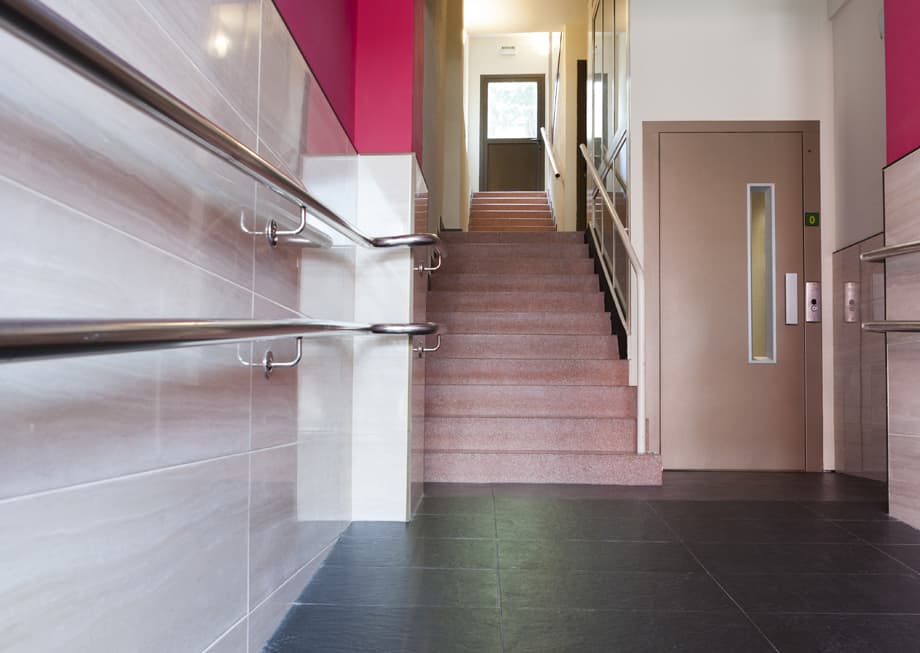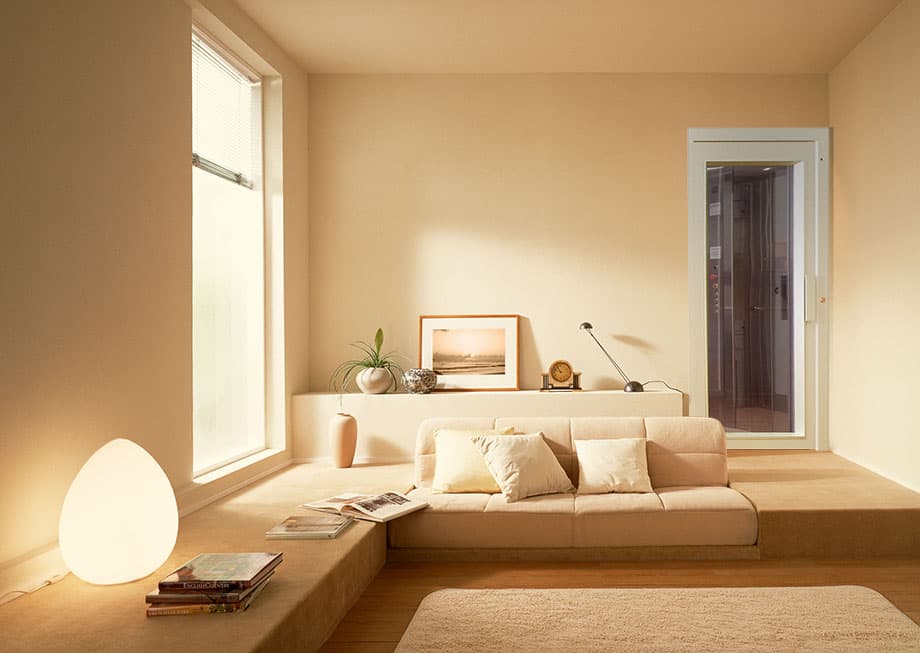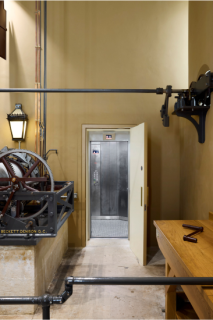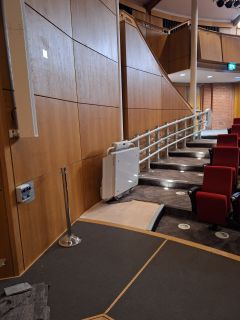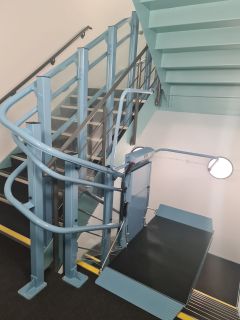A comprehensive range of access lift solutions
We offer wheelchair and disabled platform lifts right across the UK. Helping you to meet any access requirement. From standard wheelchair lifts to bespoke platform lifts, every type of lift and style is available – even where space is limited, but you still require travel between floors for wheelchair access and those with mobility issues.
Our access lifts can be installed in new and existing buildings, complementing and blending into any environment, indoor or outdoors. Whether you’re looking for a disabled lift in a public building, a wheelchair lift in a school or care home, or even a bespoke platform lift, we have the solution for you.
Our wheelchair platform lifts help building designers and owners to meet the requirements of Part M and BS 8300, as well as helping to meet Equality Act (formerly the DDA) obligations. Whether it’s working with an architect to deliver the perfect outdoor or indoor lifts for disabled; with a builder to install a disabled access lift to a tight project deadline; or with clients to advise on the best disabled lift dimensions for their building, we support each and every one of our customers.
With over 150 years of lift expertise, you can rely on us to deliver a high quality product and the service you expect.
Our commercial platform lift ranges
| Platform lift range |
Type | Operation | Entrance options |
Max speed | Max travel | Max load | Persons* |
|---|---|---|---|---|---|---|---|
| Step lift Lowriser |
Open platform, ideal for short travels |
Constant pressure | Adjacent / through | 0.08m/s | 2m | 300kg (wheelchair and user) |
1-2 |
| Vertical platform lift Midilift PL |
Enclosed disabled lift platform |
Constant pressure | Single / adjacent / through |
0.15m/s | 7m | 400kg | 5 |
| Cabin platform lift Midilift CL |
Semi-enclosed cabin |
Constant pressure / Automatic |
Single / adjacent / through |
0.15m/s | 12m | Up to 385kg | 5 |
| Low pit lift Midilift CLS |
Fully enclosed cabin, with sliding doors |
Automatic | Single / adjacent / through |
0.15m/s | 12m | Up to 400kg | 5 |
| Inclined platform lift Stairiser |
Inclined wheelchair stairlift |
Constant pressure | Available in 4 widths and a range of depths |
0.15m/s | – | 250kg (wheelchair and user) |
1 |
Looking for something outside of the standard range?
No problem. We get involved in a variety of bespoke Stannah wheelchair lifts for buildings. The first step is to contact our technical team to discuss your project in greater detail. If you’re looking for a wheelchair lift or disabled lift for a domestic application, why not see our sister site…
Contact our technical teamFeatures and benefits
Built to last
With platform lifts designed for quality, reliability and safety, all our lifts have the relevant declaration of conformity, are UKCA marked and comply with the Supply of Machinery (Safety) Regulations 2008. Plus, our external platform lifts are built to withstand the rigours of the outdoors for years.
Broad range
You can choose from a wide variety of products and disabled lift dimensions to ensure you have an electric wheelchair lift, not only unique, but stylish, and to your wheelchair lift specifications.
Safety & standards
Safety is our utmost priority. So we make sure our DDA access lifts help to meet the requirements of the Equality Act, BS 8300:2018, Part M of the Building Regulations and Section 4.2 of the Technical Handbook, covering the requirements that new and existing buildings must meet to ensure ease of access and use.
Planning tools
Frequently asked questions
What is a disabled access lift?
Disabled lifts provide a safe and convenient means of moving between different building levels for individuals with mobility challenges. Stannah Lifts supply commercial and public access lifts, and our sister company Stannah helps with mobility in the home.
What is a disabled lift?
The term disabled lifts covers a broad range of lifts designed to help lift a wheelchair user or a person with mobility challenges. It includes a variety of both inclined and vertical lifts. Stannah Lifts supplies commercial and public access lifts, and our sister company Stannah, helps with home lifts.
What are the core uses of a disabled lift?
They ensure users with mobility challenges can move safely and conveniently between different floor levels. Users don’t need to exit their wheelchairs, providing them with greater freedom and dignity.
What type of lifts are there for disabled access?
Wheelchair lifts have two main categories: vertical and inclined. Vertical lifts act like passenger lifts to transport you to other floors, and inclined platform lifts follow a flight of stairs.
What are the advantages of a disabled lift?
They are a popular public and commercial access choice where footprint, limited building work and disruption because of installation timeframes matter most.
Why do I need a wheelchair lift?
Wheelchair lifts are a great solution for access, making a public or private space easier to manoeuvre. These lifts are vital in helping people with disabilities or impaired mobility get around existing and new buildings.
What are the disabled access lift requirements?
A DDA-compliant lift is a wheelchair lift that conforms to the new Equality Act. The act requires all public buildings to have wheelchair access and references Part M or Section 4.2 to give more specific guidance.
Do access lifts need a lift pit?
When designing a building, the main advantage of an access lift is that they require only a small pit or, in some cases, don't need one at all. This is contrary to most passenger lifts where, by law, there is a requirement for a large pit.
What are the minimum dimensions for a disabled platform lift?
If a lift is going to be used by wheelchair users for public or commercial access – the floor space of a lift needs to accommodate this. Usually, this means a size of at least 1100mm x 1400mm. For home lifts, the cabin and lift can be made smaller, if the size of a wheelchair is known.
What is involved in a wheelchair lift installation?
We’ll work with your builder to advise on the necessary preparatory works. Once ready for your lift, our experienced lift installers will attend the site and complete the fitting and handover. As every lift is built to the unique site specification, please speak to us about your project as soon as possible.
How can I plan a wheelchair lift for my commercial project?
If you’re an Architect, we have a range of technical data available to download to help ensure you can fit the right lift into your project.
Can access lifts be used in the event of a fire or for evacuation?
We do not recommend these products for general fire or evacuation purposes as people may be trapped if the lift becomes immobilised. Only appropriately protected passenger lifts can be used to evacuate disabled people.
How much does a disabled lift cost in the UK?
Disabled platform lift prices vary depending on the lift and specification. However, prices start from £11,000, which covers the supply and installation but excludes any required building work.

